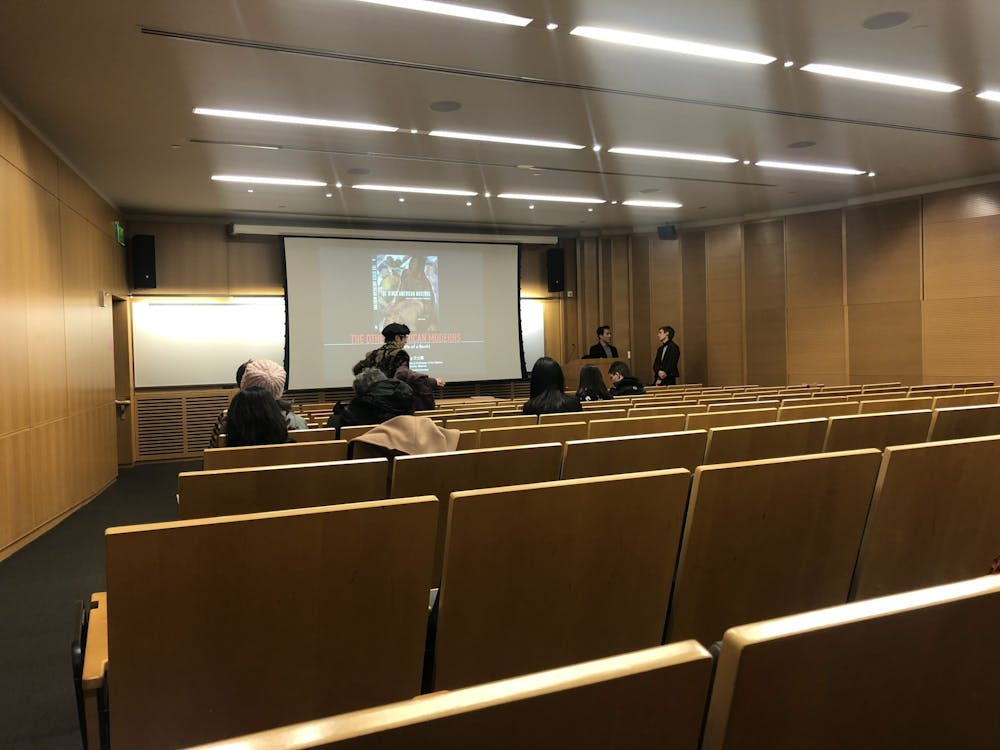Art History Professor ShiPu Wang of the University of California, Merced spoke on campus as part of the East Asian Speaker Series on Tuesday. Wang presented the outline of his acclaimed book The Other American Moderns and shared the cultural impacts it has had.
The title of his book, Wang explained, refers to four early 20th-century artists — Frank Matsura, Eitaro Ishigaki, Hideo Noda and Miki Hayakawa — whom he argues were deeply involved in American modernism in ways that have not been regularly acknowledged.
“There are no direct descendants for any of these artists, so I feel a sense of obligation as an art historian, immigrant and son of artists to contribute to the preservation of their legacies,” Wang said.
In this respect, Wang said that he considers his book a part of his larger project to force American art historians to understand non-white and non-male artists as essential figures in the narratives they tell.
Wang discussed the 1930 lynching of George Hughes. A photograph of Hughes’ corpse circulated widely in radical press. Artists found that it was an image people would recognize when they used it in their work, he argued.
“The image of Hughes’ mutilated body began a motif of sorts for artists on the left to register their horror and anger in response to the epidemic of racist violence and infecture by the capitalists,” Wang said.
Wang said one such artist was José Clemente Orozco. He argued that Orozco’s representation of the lynching emphasized the racialization of violence by contrasting the darkness of the charcoal body with the white of the flames lit underneath it.
Artists referred to other notorious incidents of racist persecution, Wang noted. He explained how the artists Hideo Noda and Diego Rivera both made explicit and repeated references in their works to the Scottsboro Boys, nine black teenagers who were falsely accused in 1931 of rape, to condemn the pervasive racism of American society.
These were the kinds of critiques Wang said the artists he studied made of the same society that they were producing their art for. He emphasized that they were making an argument about the nature of the national civic identity.
“These artists worked to confront and reimagine ‘American-ness’ and its inherent ideological complexities... vis-à-vis race and class relations, socioeconomic strife and democratic ideals,” Wang said.
Wang explained an example of this was Japanese American artist Eitaro Ishigaki.
Initially, Ishigaki was criticized for having an excessive focus on black victimization, Wang said. He argued that Ishigaki evolved in response to this criticism, referencing his painting titled The Bonus March, which Wang used for the cover of his book. This painting, Wang said, focuses not on the dignity of black freedom but rather on the humiliation of black suffering.
In an interview with The News-Letter, senior Elisa Park said that she found Wang’s perspective to be unique.
“We usually don’t see Asian people talking about other minorities. That was really interesting to learn about,” she said.
Wang also noted it is important to understand that as much as these works had in common, they were still all highly original, and each was unique in its own way.
“These works are merges of different movements that created their own language. They are not imitating any other school of art,” he said.
Wang also described some of the impacts that publishing his book has had on his career as an art historian and on the art history scene.
He said that the book opened up to him many opportunities to travel to and engage with diverse communities about his work and the artists it involves. Wang said that this has allowed him to help recover not just lost pieces of art but also unknown friendships between artists and help incorporate this new knowledge into the mainstream.
An example of this effect of publishing the book he gave was his exhibition at the Smithsonian of the art of Japanese American artist Chiura Obata.
Meghaa Ballakrishnen, an art history graduate student, explained that she is a TA for the art course Asia America: Art and Architecture, which drew on Wang’s book. She noted that she was especially intrigued by the process Wang described for conducting research.
“It was really exciting to hear about the sort of mundane processes that lead to exhibitions and the day-to-day experience of scholars. We don’t talk about that as academics,“ she said. “We don’t really share how exactly we come to something. We just want to present our findings.”





